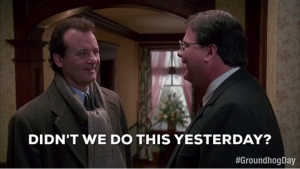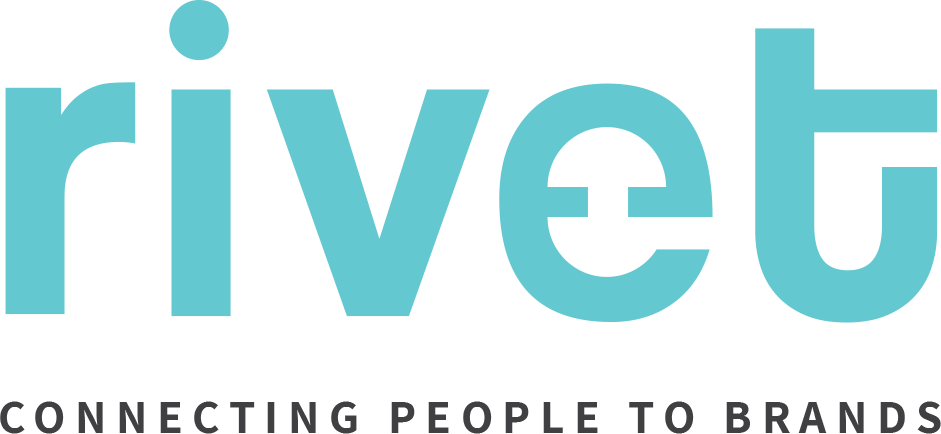Groundhog Day happens every year on February 2nd, but you may best know this curious holiday from the 1993 film in which a TV meteorologist relives the same day over and over again. As a social media specialist, I’ve seen some big online mistakes that businesses repeat over and over again . . . and it has me thinking of ways they can break the cycle of their own social media Groundhog Day.
Social media has the power to elevate a business, helping to establish its personality and brand identity to a mass online audience. However, this does not come without its risks. As many communications professionals could agree, social media can be extremely harmful when used the wrong way, bringing many negative impacts to your business.
Universal Social Media Across All Platforms
It’s very easy to fall into the trap of recycling the same posts and content strategy across all your business’ platforms (I mean, who doesn’t want to save that time and money?); However, you may want to reconsider that for your 2023 marketing plans.
Every social platform carries its own unique capabilities, as well as its own individual appeals for different kinds of audiences. It’s vital that your content strategy be personalized to each individual platform to maximize the reach and success of your campaign. Not only will this increase the authenticity of your brand, but it will ensure that the brand avoids coming off as disingenuous, lazy, or spam-like.
personalized to each individual platform to maximize the reach and success of your campaign. Not only will this increase the authenticity of your brand, but it will ensure that the brand avoids coming off as disingenuous, lazy, or spam-like.
The very best brands can use each of their social platforms as unique branches – or extensions – of their key messages. They aren’t simply vehicles to transport the same messages repeatedly, they’re direct pipelines to a number of different audiences and should be treated as such. Your consumers on LinkedIn are most certainly not the same audiences you’ll be catering to on Snapchat, so ensure that your messages adapt to each platform’s necessities.
Quality Over Like Count
We cannot say it enough: Numbers aren’t everything when it comes to social success! And we know . . . this may come as a shock.
It’s become customary for companies to focus way too much on the number of followers, likes, and retweets their content receives on social media. This mindset is very influencer-centric (as we like to call it), where the number of followers somehow correlates to the success of that brand. For businesses selling a product though, numbers are not the equivalent of actual sales.
No, we aren’t saying numbers don’t matter at all, but low numbers don’t necessarily mean you aren’t successful on the platform. It serves a company much better to have 100,000 highly engaged brand advocates following their Instagram versus 1,000,000 unresponsive bots. Shift your focus to pushing out key messages that resonate with audiences and boost engagement, and you’ll be far better off in the long run.
The Comments Conversation
We couldn’t forget about the comment section – but some companies do. It’s inevitable that every company with a public presence is going to face some online scrutiny. This is especially true with today’s online “cancel culture,” which has led to the swift downfalls of a number of prominent influencers, celebrities, and companies.
Let us tell you right now – deleting those negative comments is tempting, but it’s not the solution.
If anything, deleting or ignoring negative comments can aggravate the situation, inciting further backlash from even the most loyal of consumer bases. Instead, it’s important to take a step back, analyze the company’s actions, and take accountability for any mistakes. Even reaching out to specific individuals and offering a private apology can be effective, demonstrating that your company values their unique perspective on the situation. Remember to do so in a quick and efficient manner and you may be able to avoid that PR nightmare!
#The #Hashtag #Situation
Listen: appropriate hashtag use can be an exceptional asset to your business. Hashtags can grant huge visibility to your digital campaigns and grow your brand awareness . . . that is, if they are used correctly.
Large companies have fallen into this bad habit of overusing their hashtags and lacking intentional hashtag strategy. What does that mean? It means finding hashtags that are relevant and niche-specific, as opposed to making #every #single #word #a #hashtag.
Also, as previously mentioned, quality trumps quantity, so no need to use fifty hashtags on a single Instagram post. Tailor your hashtags (and the amount you use) to the platform you’re posting on: For example, we recommend posting between 8-10 niche-specific hashtags on Instagram. Meanwhile, on Twitter, you should only really be using two.
So maybe social media isn’t as straightforward as you may have thought. It’s certainly not as easy as just posting and waiting for the numbers to start rising. That’s because social media isn’t just a set of platforms: It’s both a tool and a skill that has become a necessity in today’s world of digital marketing. So, don’t be like Phil Connors and fall into the same rote habits over and over again . . . instead, make your organization’s social media an ever-evolving, genuine extension of your brand, and it will prove to be a great toolset to build deep connections with your online communities over the long run.
About Yuliana
 When not crafting social media brilliance as Rivet’s social media intern, Yuliana Garcia-Portilla is a senior advertising major at the University of Florida where she is pursuing a combined-degree Master’s in mass communication with a concentration in social media. She is an account supervisor and head media supervisor at The Agency at UF and an advertising sales representative at The Independent Florida Alligator. She’s also a die-hard fan of cookie dough ice cream with brownie crumbles on top.
When not crafting social media brilliance as Rivet’s social media intern, Yuliana Garcia-Portilla is a senior advertising major at the University of Florida where she is pursuing a combined-degree Master’s in mass communication with a concentration in social media. She is an account supervisor and head media supervisor at The Agency at UF and an advertising sales representative at The Independent Florida Alligator. She’s also a die-hard fan of cookie dough ice cream with brownie crumbles on top.

